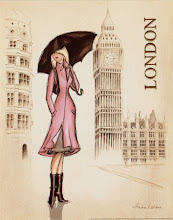
So, this is my first blog post. Exciting right?
Actually, add a tad of terrified, an ounce of uncertainty, a dash of curiosity, and then mix all those ingredients with the excitement and that explains it a little better. I feel like I should make it the best it can be but that's always asking a bit much so we'll just see how it all pans out.
You might be wondering why the blog address is what is is. Good question. I just so happen to have the answer at hand. The Bleeding Heart Yard. Maybe to you it sounds morbid and/or disgusting. I thought it sounded poetic, beautiful, and all in all a perfect description for what I was trying to tell.
I thought the legend of The Bleeding Heart Yard was truly interesting.
The Legend
Lady Elizabeth Hatton was the toast of 17th Century London society. The widowed daughter-in-law of the famous merchant Sir Christopher Hatton (one-time consort of Queen Elizabeth 1), Lady Elizabeth was young, beautiful and very wealthy. Her suitors were many and varied, and included a leading London Bishop and a prominent European Ambassador. Invitations to her soirees in Hatton Garden were much sought after.
Her Annual Winter Ball, on January 26, 1662, was one of the highlights of the London social season. Halfway through the evening's festivities, the doors to Lady Hatton's grand ballroom were flung open. In strode a swarthy gentleman, slightly hunched of shoulder, with a clawed right hand. He took her by the hand, danced her once around the room and out through the double doors into the garden. A buzz of gossip arose. Would Lady Elizabeth and the European Ambassador (for it was he) kiss and make up, or would she return alone? Neither was to be. The next morning her body was found in the cobblestone courtyard – torn limb from limb, with her heart still pumping blood onto the cobblestones. And from thenceforth the yard was to be known as The Bleeding Heart Yard.
And there's another theory about how The Bleeding Heart Yard came to be named:
Trey Philpotts of the University of Delaware writes that the courtyard is, in fact, named after a sign dating back to the Reformation that was displayed on a pub called the Bleeding Heart in nearby Charles Street. The sign showed the heart of the Virgin Mary pierced by five swords.
So, your first history lesson went well I hope. Anyways, forgive my lame attempt at humor.
I'll try again tomorrow!

I love everything there is to love about your new blog!
ReplyDeleteLoved reading the legends and why you call this "the bleeding heart yard." Can't wait for the next post!!! :)
You are the best kind of friend!
ReplyDeleteGreat story I think I am going to learn alot
ReplyDelete